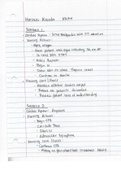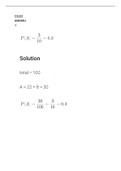Class notes
principles of pharmacology
- Course
- Institution
- Book
Complete course of principles of pharmacology for engineering students, specially biomedical engineers. This course introduces the basis of pharmacology, along with some engineered applications. The contents are the following: 1. Pharmacokinetics and pharmacodynamics 2. Pharmaceutical formulations ...
[Show more]













